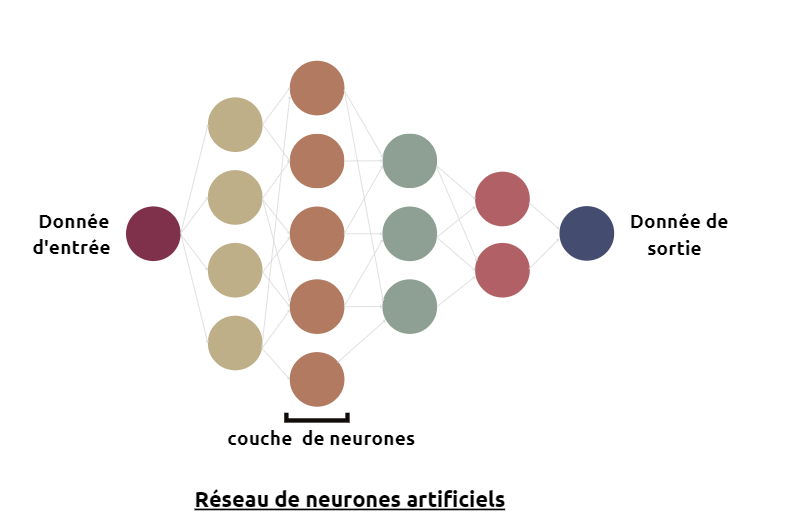What is Deep Learning?
ALIA SANTé

New terms are constantly appearing in the field of artificial intelligence. Deep Learning is part of the new wave of AI learning. Let’s take a closer look at what it’s all about.
Reading time: 2 minutes.
A few words about Deep Learning
A branch of Machine Learning, Deep Learning is a field of artificial intelligence increasingly used in everyday life: facial recognition, image identification, conversation translation… Although it is based on the same foundations as conventional artificial intelligence learning, it is a more specialized and in-depth field.
Indeed, Deep Learning is a field of artificial intelligence that involves programming a machine to learn to perform specific tasks based on data and examples. The main idea is to create algorithms capable of approximating the workings of the human brain, using artificial neural networks. Deep Learning uses artificial neural networks to achieve this.

While machine learning is already very powerful, deep learning is made up of a more complex mechanism. As a result, this technology is able to process larger quantities of data. It is therefore highly relevant in fields such as finance, law and, of course, healthcare.
The mechanisms of deep learning

This involves the use of artificial neural networks, inspired by biological neurons. Tens or even hundreds of functions are linked together to form artificial neurons. These are divided into several interconnected layers. Each layer has its own task, its own objective to achieve. They are asked to interpret the information given by the previous layer of neurons and pass it on to the next.
It’s a chain to which each link contributes information.
The deeper these neurons are, i.e. the more functions they contain, the more capable the machine is of learning to perform complex tasks. (e.g. identifying people in photos).
A special case of Deep Learning : imaging
Dans le cas spécifique de l’analyse d’images médicales, les réseaux neuronaux sont convolutifs.
La convolution est une opération mathématique. Si elle est si compatible avec les images, c’est parce qu’elle permet d’extraire des caractéristiques. Elle est capable de traduire les pixels de l’image.
Un réseau de neurones convolutif est un cas particulier de réseaux de neurones artificiels. Ce réseau se caractérise par ses premières couches convolutives, qui appliquent un filtrage convolutif à l’entrée. Les premières couches détectent les attributs les plus importants, tandis que les dernières couches détectent les attributs les plus précis.
C’est pourquoi cette architecture est souvent utilisée dans la reconnaissance d’images médicales ou de vidéos.

